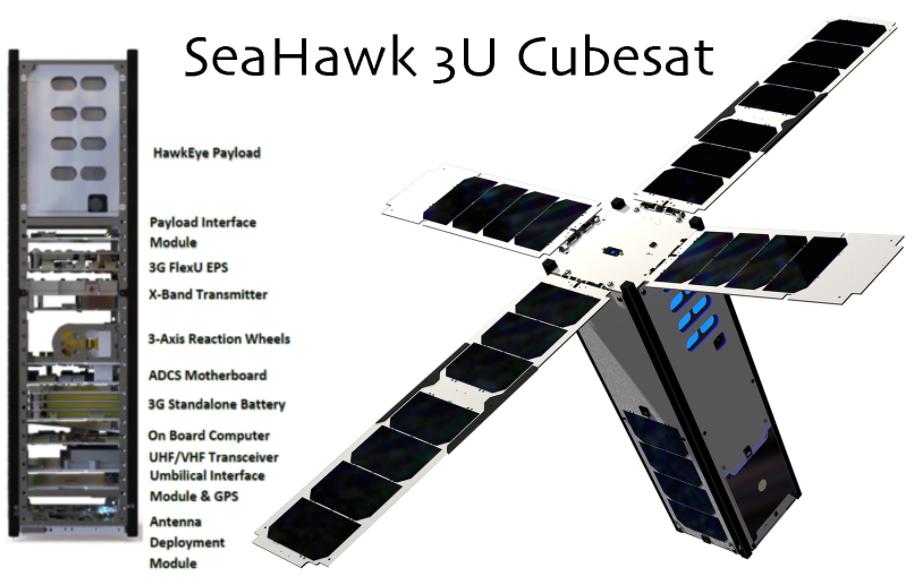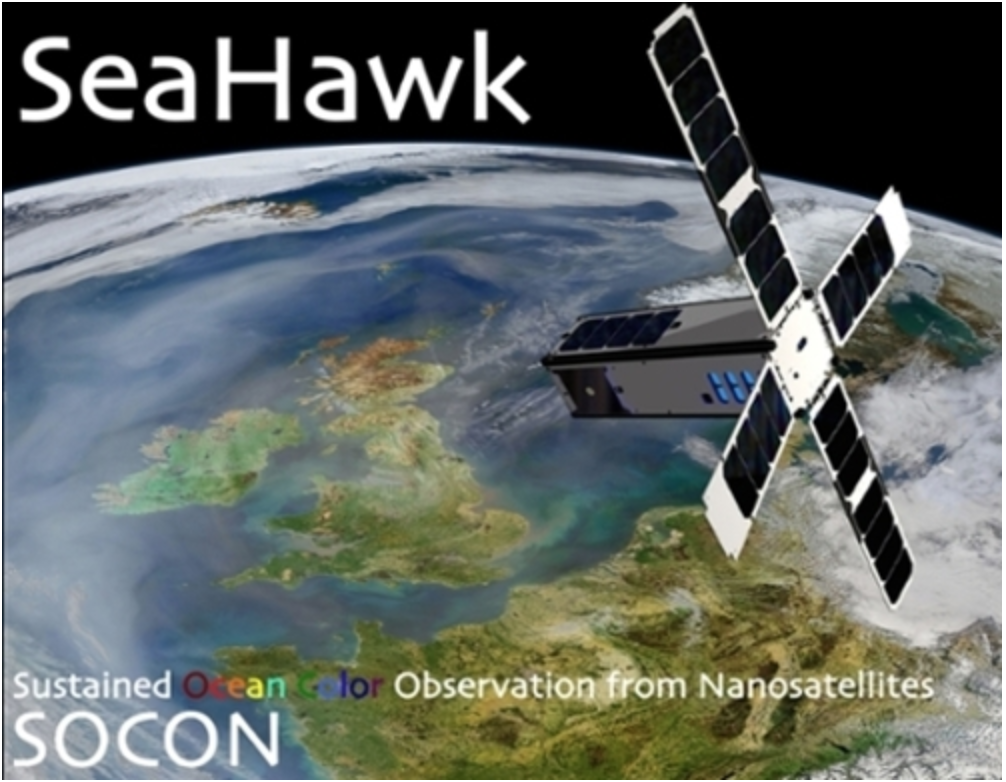The goal of the SOCON (Sustained Ocean Color Observation from Space) program was to construct and demonstrate the potential scientific applications of a high resolution (~120m) ocean color instrument to be carried by a 3U (10cm x 10cm x 30cm) CubeSat Platform. The CubeSat (named SeaHawk after UNCW mascot) was designed and built by ACC Clyde (Scotland) and the Hawkeye Multispectral Sensor was built by Cloudland Instruments (California). SeaHawk is the first Ocean Color Cubesat In Orbit!
SOCON is a unique public, private and federal partnership between: University of North Carolina Wilmington, (Public: owner/operator); University of Georgia Skidaway Institute of Oceanography, (Public: science program and management); Cloudland Instruments (Private/Commercial: design and construction of HawkEye ocean color sensor); AAC Clyde Space (Private/Commercial: design and construction of SeaHawk satellite bus); Spaceflight Inc. (Private/Commercial: launch service provider); and NASA/Goddard’s Ocean Color Group (Federal: under a Space Act Agreement between UNCW and NASA’s Science Mission Directorate, a partnership was created to ensure the collection, archive, distribution and calibration of HawkEye data to maximize its use by the science community).The SOCON program is administered by Dr. John Morrison from UNCW and was funded by the Gordon and Betty Moore Foundation.
On December 3rd, 2018, the SeaHawk-1 Ocean Color Cubesat outfitted with HawkEye Ocean Color Sensor was launched aboard the SpaceX Spaceflight SSA-O SmallSat Express (http://spaceflight.com/sso-a/) using a Falcon IX booster from Vandenberg Air Force Base, California. SeaHawk was one of the 64 nanosatellites launched as part of SpaceX first rideshare mission from the U.S.
In June 2021, the University of Georgia Skidaway Institute of Oceanography joined the partnership. Dr. Sara Rivero-Calle’s team will be co-leading the Science Program and Mission Management. The UGA-SkIO team includes Kelsea and Deanna Edwing (two recent graduates from UNCW who were trained by Rivero-Calle during her postdoc at UNCW) and Masud-Ul-Alam, a new graduate student joining the lab in August 2021.

Key Mission Parameters
- Launched December 3rd, 2018
- Nominal orbital height = 575 km
- Sun-synchronous around 10:30 am
- 9-day repeat orbit
- Baseline orbital lifetime of 1 year (18-24 month)
- Baseline of 15 scenes per day (200 x 600km of approximately 120-meter resolution – 100MB/scene)
- X-band downlink (Wallops & Alaska) data rate of 6 –> 100mbps
- Weight of instrument less than 1 kilogram
- Total weight of spacecraft plus instrument less than 5 kilograms
- Off-the-shelf CCD arrays used
- Sensitivity comparable to SeaWiFS
- Open intellectual property and knowledge sharing
More Information
UNCW SeaHawk Cubesat and the SOCON Mission: https://uncw.edu/socon/index.html
NASA SeaHawk Dashboard (download imagery here!): https://oceancolor.gsfc.nasa.gov/seahawk/



